Understanding Formula 420: A Glass and Bowl Smoking Cleaner
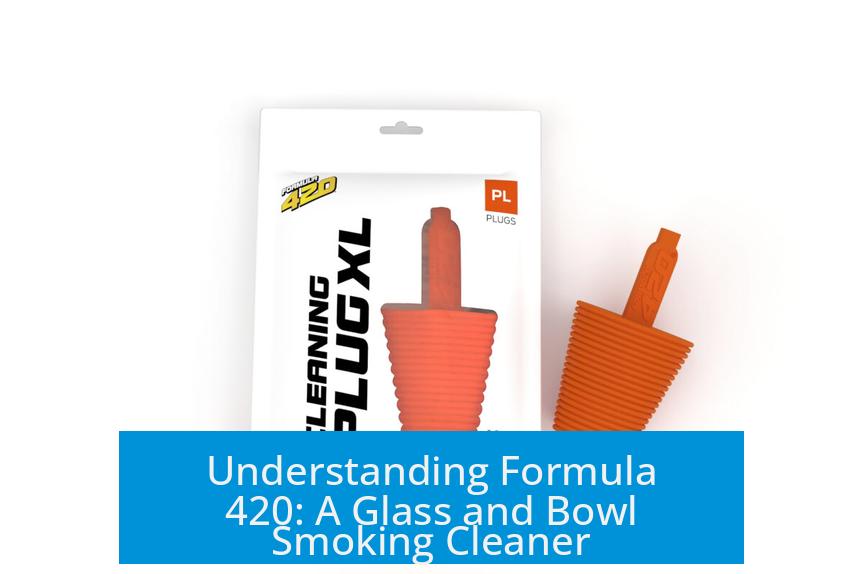
Formula 420 is a specialized cleaner designed to effectively remove resin and buildup from glass smoking devices such as bowls and pipes. It is praised for its strong cleaning performance, often outperforming conventional solvents like acetone. This ability makes it popular among users seeking quick and efficient cleaning results on heavy residues.
What Is Formula 420 Used For?
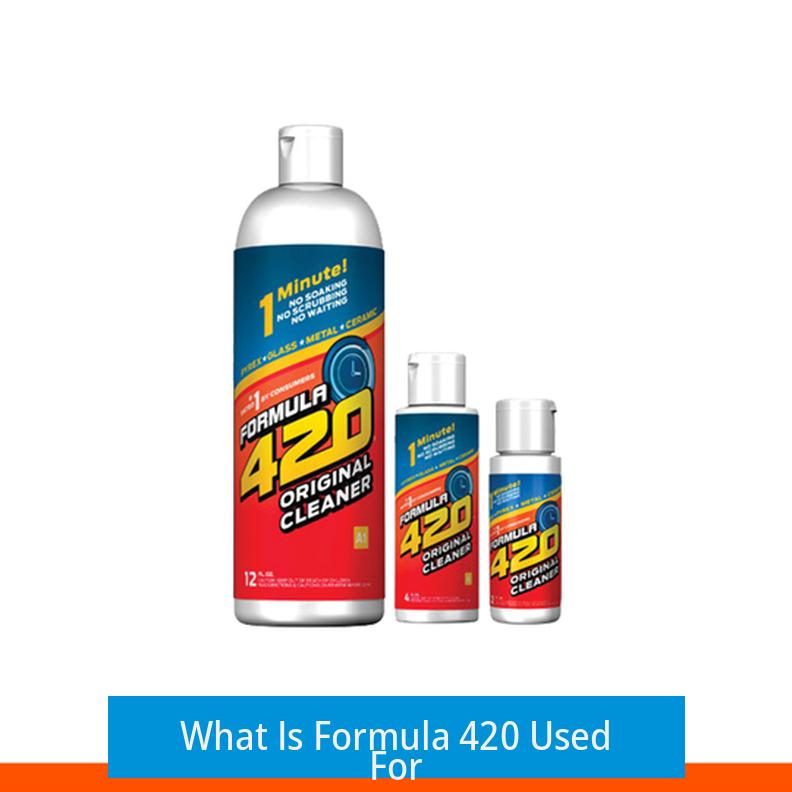
- Cleaning glass smoking equipment, including bowls, pipes, and rigs
- Removing stubborn resin, tar, and other residues
- Restoring clarity and cleanliness to glass surfaces
The product caters specifically to those who require a powerful agent capable of tackling difficult deposits without prolonged scrubbing.
Chemical Composition of Formula 420
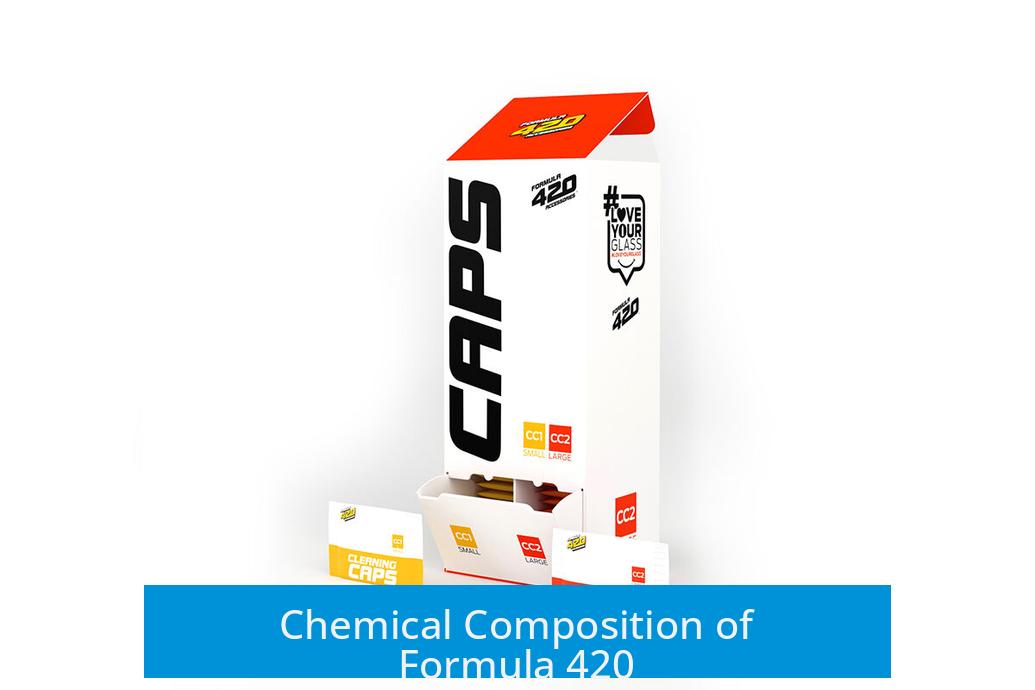
Formula 420’s exact formula is proprietary, and manufacturers typically do not disclose all ingredients. However, various sources identify known and suspected components useful to understand the product’s function and safety profile.
Known Ingredients
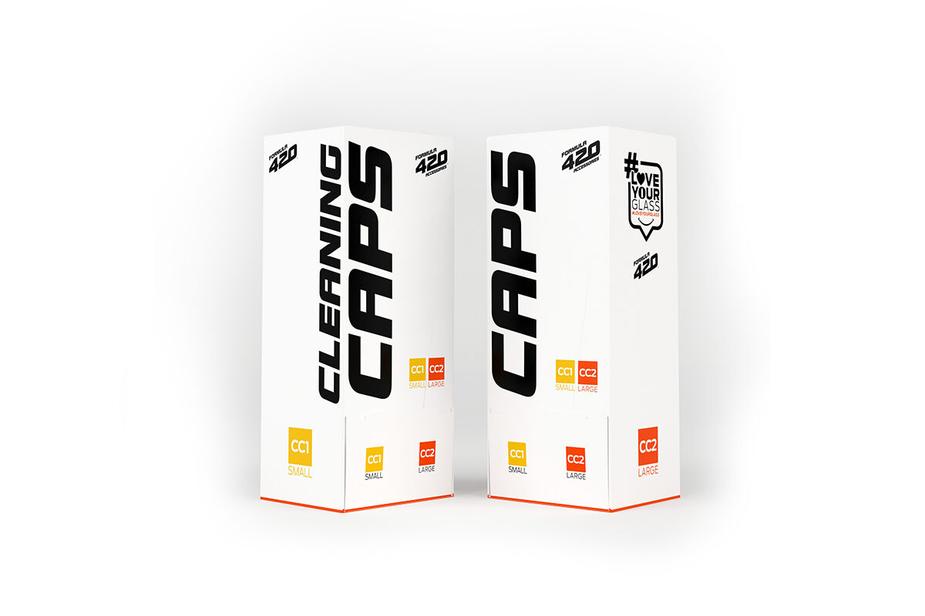
| Chemical | Description |
|---|---|
| Dimethyl Benzyl Ammonium Chloride | An antimicrobial agent and surfactant, used in disinfectants and cleaners |
| Sodium Metasilicate | An alkaline compound that acts as a builder and emulsifier, helping to break down organic residues |
| Tetrasodium EDTA | A chelating agent that binds metal ions, improving cleaning effectiveness |
| Perfume Oil | Added fragrance to mask chemical odors |
| Dye | Gives the product its color |
These compounds provide diverse roles: surfactants break down oily substances, alkaline agents saponify resin deposits, and chelators improve overall efficiency by binding minerals.
Suspected Additional Ingredients

- d-Limonene: A terpene found naturally in citrus oils and cannabis. Considered a strong solvent that can dissolve resins. It is used industrially but not officially listed.
- Isopropyl Alcohol: A common solvent in glass cleaners. Likely present due to its rapid evaporation and grease-cutting ability.
- Silicates: Possibly abrasive glass particles or compounds assisting physical scrubbing action.
Since the formula is proprietary, these components are deduced from typical industrial glass cleaning practices and user observations. Their presence enhances the product’s ability to dissolve tough residues effectively.
Environmental and Safety Considerations

Formula 420 markets itself as environmentally friendly; however, scrutiny of its chemical content raises questions.
- The listed chemicals have typical industrial applications and are not inherently “green.”
- Lack of full ingredient disclosure limits independent environmental assessments.
- Some solvents like d-limonene can be sourced from natural biomass or petrochemicals, affecting their environmental footprint.
The absence of a comprehensive ingredient list complicates clear environmental impact analysis.
Safety Data Sheets (SDS) Availability
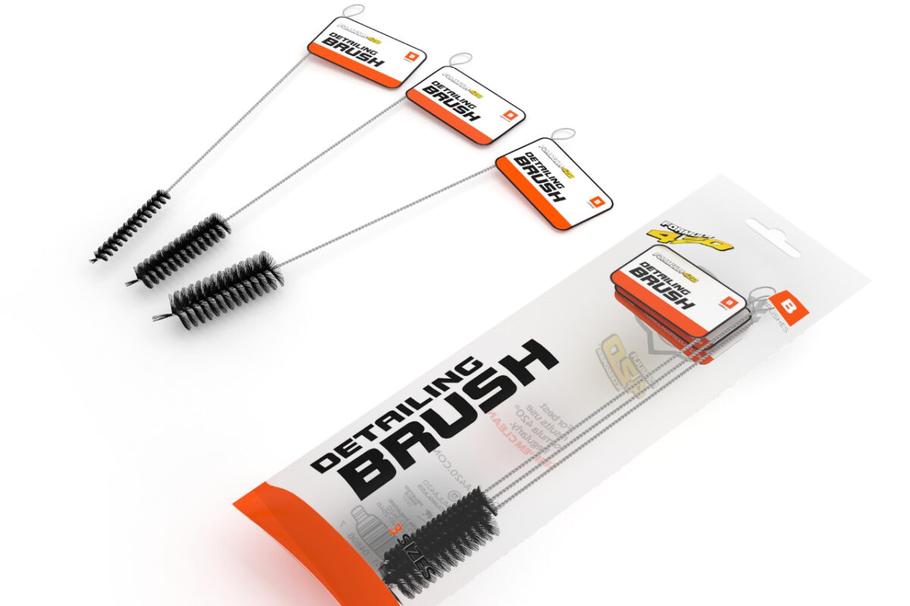
Consumers often face challenges in obtaining SDS for Formula 420 because:
- SDS are legally required mainly for commercial usage regulated by OSHA.
- Consumer products fall under the Consumer Product Safety Commission, which does not mandate SDS disclosure.
- Ingredients below certain thresholds or protected as trade secrets may be omitted from available SDS.
To attempt acquiring an SDS, users can:
- Contact the company’s customer service for information.
- Request SDS from local shops selling the product.
- Have retailers reach out to manufacturers or distributors who legally hold the document.
Some SDS documents identified online suggest inclusion of the known key ingredients but often lack comprehensive chemical listings.
How Does Formula 420 Compare to Other Cleaners?
Users report superior performance compared to standard solvents like acetone. The combination of strong alcohol bases and alkaline agents allows Formula 420 to:
- Remove resin quickly on first application.
- Reduce scrubbing time substantially.
- Restore glass clarity effectively.
Its efficacy on heavy, stubborn deposits makes it a preferred choice for frequent users demanding fast results.
Summary of Formula 420 Characteristics
| Aspect | Details |
|---|---|
| Purpose | Cleaning glass smoking devices of resin and tar buildup |
| Known Chemicals | Dimethyl Benzyl Ammonium Chloride, Sodium Metasilicate, Tetrasodium EDTA, perfume oil, dye |
| Suspected Additives | d-Limonene, isopropyl alcohol, silicates |
| Cleaning Power | Stronger than acetone, working quickly and effectively on tough residues |
| Environmental Claims | Claims environmentally friendly but lacks full chemical transparency |
| SDS Availability | Limited; primarily accessible via direct company or distributor request |
Recommendations for Users
Users aiming to clean glass smoking equipment can benefit from Formula 420’s potency. However, they should:
- Use in well-ventilated areas due to chemical solvents present.
- Avoid direct skin contact and use gloves if possible.
- Follow any manufacturer safety instructions and disposal guidelines.
- Seek SDS for better understanding of chemical risks, especially in commercial or intensive use.
Key Takeaways
- Formula 420 is a highly effective glass cleaning product targeting resin in smoking devices.
- Its known ingredients include surfactants, alkaline builders, and chelators, with suspected solvents and abrasives enhancing performance.
- Environmental safety claims lack full chemical transparency, warranting cautious interpretation.
- Obtaining Safety Data Sheets is not straightforward for consumers but can be done via company or retailer inquiries.
- The cleaner significantly reduces cleaning effort compared to traditional solvents like acetone.
- Users should exercise standard chemical safety practices when handling Formula 420.
Unlocking the Mystery of Formula 420: The Glass Cleaner That Packs a Punch
If you’ve ever wrestled with stubborn resin build-up on your glass or bowl, you probably wonder: Does Formula 420 really clean better than the rest? The short answer is yes, but the story goes deeper.
Formula 420 is a dedicated glass and bowl smoking cleaner. It’s designed to power through those pesky residues that refuse to budge with ordinary cleaners. Users rave about its strong alcohol base and quick action, noting it cleans in just one swipe — unlike acetone, which often demands vigorous scrubbing.
But what makes Formula 420 so effective? And should you worry about safety or what’s inside this mysterious liquid?
What’s Inside: Chemical Ingredients Demystified
Formula 420’s exact formula is something of a secret, but happens to be partially unveiled thanks to publicly available Safety Data Sheets (SDS). You’ll find components like Dimethyl Benzyl Ammonium Chloride, a known antimicrobial agent, Sodium Metasilicate, and Tetrasodium EDTA, which helps with water hardness and cleaning efficiency.
There’s also perfume oils and dyes—probably there to make the cleaning experience a little less harsh on your nose and eyes.
“But wait,” you say, “what about that supposed ‘environmentally friendly’ label? Sounds iffy given what’s in it.” Indeed, formulas like this don’t always list every chemical, especially if they’re trade secrets or below regulatory thresholds.
Some suspects, based on consumer sleuthing, include d-Limonene (a terpene found in cannabis and a common industrial solvent), small glass-like silicates that may add abrasion, and possibly isopropyl alcohol, a classic glass cleaner staple.
The Elusive Safety Data Sheet: Why It’s Hard to Find
If you’re like most curious users, you’ve tried to hunt down the Safety Data Sheet (SDS) for Formula 420 — without much luck. Here’s why: consumer products like this aren’t required by OSHA to provide full SDS unless marketed for commercial use. Instead, regulatory oversight falls to the Consumer Product Safety Commission, which doesn’t enforce SDS disclosure.
Moreover, chemicals in tiny concentrations can be excluded from the ingredient list, and ‘trade secret’ claims allow manufacturers to keep some formulas under wraps. That leaves consumers somewhat in the dark.
Still, if you want an SDS, there’s hope. Contact the company’s customer service directly or chat with local shops selling the product. Shops often have access to SDS for emergencies, and may be willing to request it from the manufacturer or distributor.
“Consumer Power Tip: Don’t be shy. A polite inquiry can unlock the safety info you need.”
Performance That Happens Fast—and Hard
So how does Formula 420 perform in the wild? Users describe it as a “one-and-done” cleaner, working faster than acetone-based scrubbing. One testimonial excitedly says it “took hurculiner off my hands like it was nothing,” emphasizing the product’s strength.
Behind that power is a tough alcohol base, enhanced by surfactants and detergents. A strong chemical punch swoops in to dissolve resin while silicates and abrasives scrape away what’s left, all without hours of elbow grease.
But a warning—strong cleaners mean you should use them carefully. Gloves are a good idea if you want to keep your skin intact, and ensure the area is well ventilated. No one needs chemical burns or headaches paired with a clean pipe.
How Does Formula 420 Compare?
Compared to generic glass cleaners, Formula 420 is designed specifically for smoking accessories, which often have stubborn, sticky residues regular cleaners can’t handle. While acetone and isopropyl alcohol mixtures are common DIY solutions, they don’t always impress when dealing with heavy tar or resin buildup. Formula 420’s blend of chemicals and potential abrasives pushes it ahead.
On the other hand, some users may prefer natural or environmentally friendly alternatives, which this product doesn’t explicitly guarantee. Its somewhat secretive formula raises valid questions about long-term environmental impact.
To Use or Not to Use: Practical Tips
- Wear gloves. Treat it like a serious cleaner to avoid skin irritation.
- Ventilate the area well. Those perfume oils? They don’t mask everything.
- Don’t mix with other chemicals—especially other solvents or acids. That’s a recipe for trouble.
- For stubborn stains, soak your glass bowl for several minutes rather than just quick dips.
- Ask your supplier for Safety Data Sheets if safety is a top concern.
Final Thoughts
Formula 420 stands out as a potent glass and bowl smoker’s cleaner, capable of zapping away even the toughest resin fast and effectively. Its strong alcohol base, combined with active ingredients like Dimethyl Benzyl Ammonium Chloride and Sodium Metasilicate, give it a cleaning edge that traditional methods often lack.
However, the mystery around its full chemical composition and environmental claims means users should approach it with a bit of caution. It’s not a magic potion but a serious chemical tool, built for heavy-duty cleaning.
Are you willing to trade a bit of uncertainty for sparkling clean glass? Or does your conscience demand full transparency and greener alternatives? Either way, Formula 420 holds a unique spot in the smoking accessory cleaning arsenal.
Have you tried Formula 420 yet? What’s your cleaning go-to for glass pipes? Share your stories — and maybe your cautionary tales — in the comments!
What ingredients are confirmed in Formula 420?
It contains Dimethyl Benzyl Ammonium Chloride, Sodium Metasilicate, Tetrasodium EDTA, perfume oil, and dye. These are listed in an official Safety Data Sheet available online.
Is Formula 420 environmentally friendly?
The product claims to be, but the exact chemical mix isn’t fully disclosed. Some ingredients like d-Limonene are natural, but others may not be eco-friendly. The full impact is unclear.
Why is it hard to find a full Safety Data Sheet (SDS) for Formula 420?
The product is mainly for consumers, so manufacturers don’t have to share complete chemical info or SDS unless used commercially. Some ingredients may be kept secret or below reporting levels.
How can I get a Safety Data Sheet for Formula 420?
- Contact the company’s customer service.
- Ask the local store selling it if they have an SDS.
- Request the store to reach out to the distributor or manufacturer for the SDS.
How effective is Formula 420 for cleaning glass smoking devices?
It cleans heavy residue faster and stronger than acetone or scrubbing. Users report it clears tough buildup in one use with an alcohol-based formula.




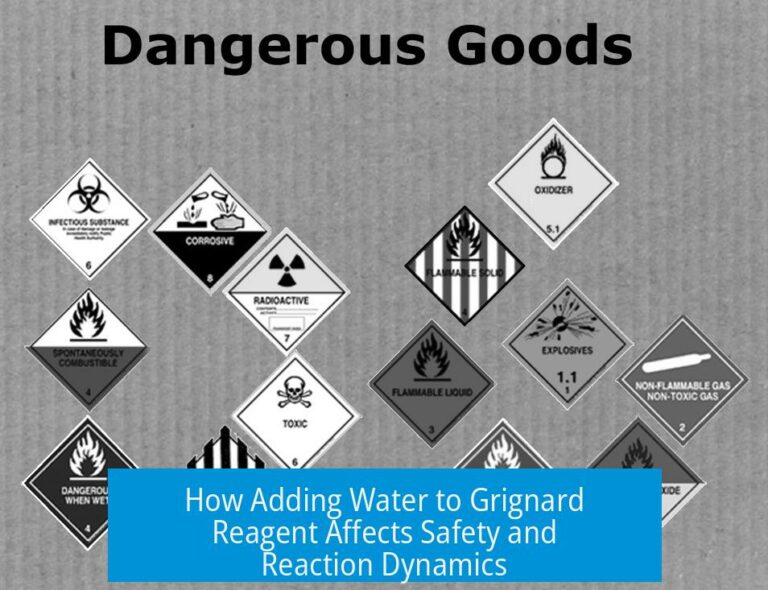
Leave a Comment